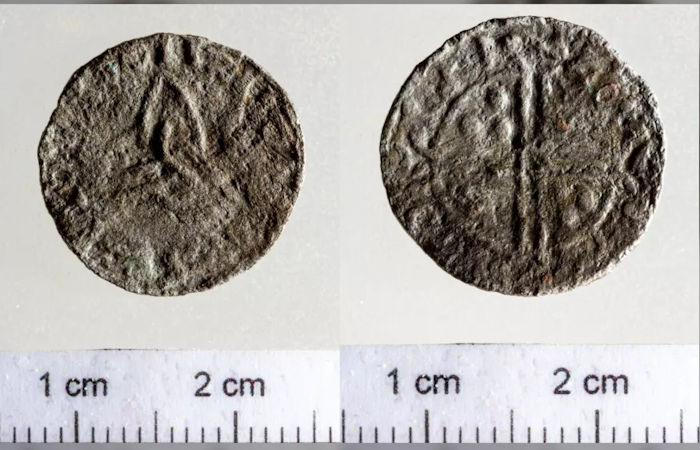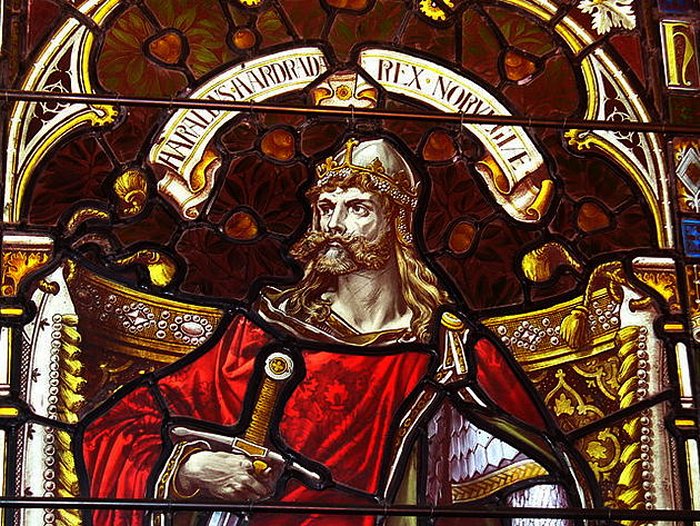Jan Bartek – AncientPages.com – A metal detector has discovered an ancient coin depicting mighty Viking King Harald Hardrada. The 1,000-year-old coin was found in southern Hungary.
The discovery was somewhat surprising to archaeologists who have struggled to explain how the coin could have ended up there.

The small silver coin was found near the Hungarian village of Várdomb. It dates to between 1046 and 1066 and is inscribed with the name of the Norwegian king. Credit: Tamás Retkes
There is archaeological and historical evidence of contact between Scandinavia and Hungary. Scandinavian artifacts have been found in Hungary and ancient objects from Hungary have been unearthed in Scandinavia. This particular find shouldn’t be much of a surprise. However, scientists say this is the first time a coin from Scandinavia has been found in Hungary.
Could the silver coin have reached the country with the traveling court of a medieval Hungarian king? Despite being made of silver the coin was not particularly valuable at the time.
Metal detector Zoltán Csikós who found the silver coin presented it to archaeologist András Németh at the Wosinsky Mór County Museum in the nearby town of Szekszárd.
According to the Fior Reports, “the Várdomb site houses the remains of the medieval settlement of Kesztölc, at the time one of the most important trading towns in the region. Archaeologists have made hundreds of finds there, including clothing jewelry, and coins, Varga said.
The coin found at the Várdomb site is in poor condition, but it is identifiable as a Norwegian penning minted between 1046 and 1066 for King Harald Sigurdsson III. – also known as Harald Hardrada – was minted in Nidarnes or Nidaros(opens in new tab)a medieval mint in Trondheim in central Norway.
The description of a similar coin(opens in new tab) notes that the obverse bears the king’s name ‘HARALD REX NO’ – meaning Harald, King of Norway – and is decorated with a ‘triquetra’, a three-sided symbol representing the Holy Trinity of Christianity.
The other side is marked with a Christian cross in double lines, two rows of decorative dots, and another inscription giving the name of the mint master of Nidarnes.”

Window with a portrait of Harald Hardrada, Lerwick Town Hall, Shetland. Image credit: Colin Smith – CC BY-SA 2.0
In the Medieval Hungarian manuscript known as “Képes Krónika” (or “Chronicon Pictum” in Latin), it is written that Solomon and his advisers were encamped “above the place called Kesztölc” in 1074. Archaeologists suggest the traveling party may have lost the silver coin during this journey.
“The king’s court could have included people from all over the world, whether diplomatic or military leaders, who could have had such coins,” Varga and Németh said in a statement.
“This road was used not only by kings, but also by merchants, pilgrims, and soldiers from afar, any of whom could have lost the rare silver coin,” they wrote.
Another possibility is that the silver coin was brought to medieval Kesztölc by an ordinary traveler: the trading town “was crossed by the main road carrying international traffic, the predecessor of which was a road built along the Danube in Roman times,” the researchers said in the statement.
As explained earlier on AncientPages, “mighty King Harald Hardrada was the last great Viking and the most feared warrior of his world and time. He fought in the ᴅᴇᴀᴅliest battles and traveled to distant lands where he met exotic and powerful people. His courage and combat skills made him a military commander in the Varangian Guard and Kievan Rus’.
Hardrada spent all his life as a professional soldier, and his reputation preceded him.
See also: More Archaeology News
The most comprehensive accounts of King Harald Hardrada’s life can be found in the thirteenth-century collections of sagas of the Norwegian kings, of which the most respected is the one known as Heimskringla and reliably attributed to the Icelandic historian, poet, and politician Snorri Sturluson (1179 – 1241).”
Written by Jan Bartek – AncientPages.com Staff Writer





